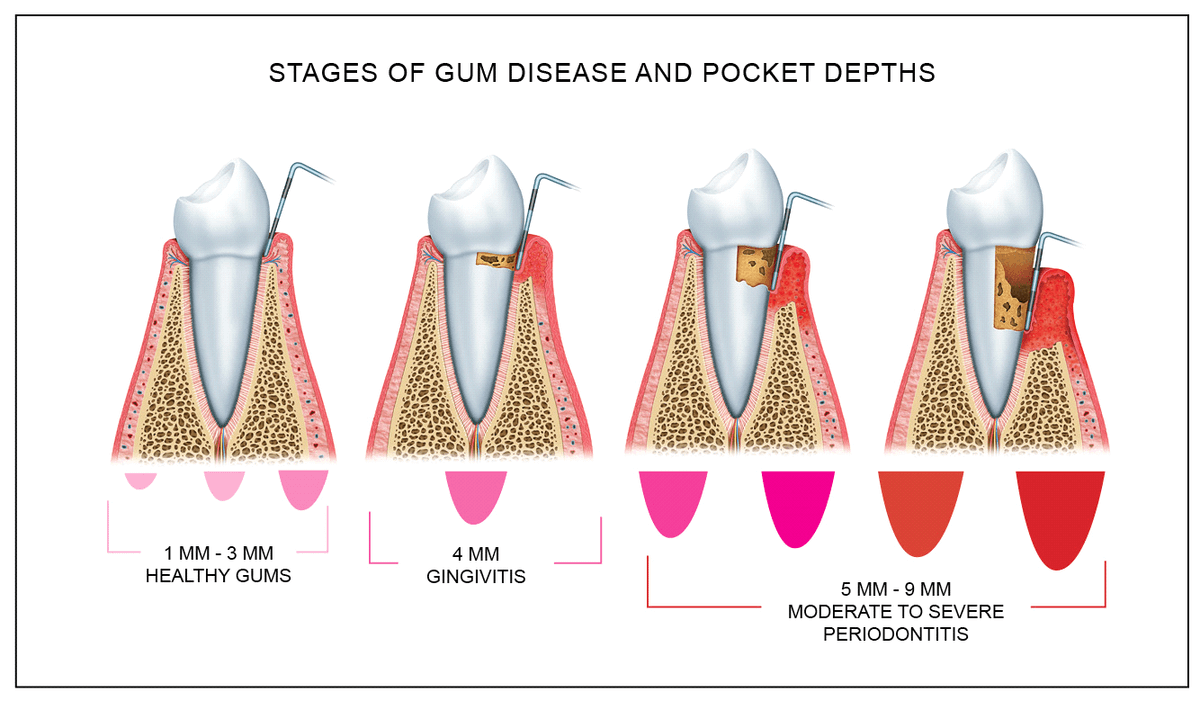How Gums Are Measured
Think back to the last time you had a dental exam, where the hygienist or dentist repeatedly called out a series of numbers, such as “4, 3, 3…3, 2, 3….3, 2, 4…” while you listened. The numbers were either jotted down by an assistant or clicked into a computer.
If you’re someone with all of your teeth, except for four wisdom teeth that were removed maybe when you were younger, your dentist or hygienist just listed 168 site-specific measurements. That’s six on each of your remaining 28 teeth.
What is Periodontal Probing?
These measurements are the depth of the sulcus or periodontal pocket at six specific points on each tooth. The bottom of the “pocket” is where the gingiva attaches at the root of your tooth. A small probe with millimeter increments marked onto it is slid just under the gums until it rests at the bottom of the pocket. Then the corresponding measurement at the edge of the gums is recorded, so that your dentist knows how deep each pocket is.
We call this process a periodontal exam or probing.

Does it Matter How Deep Gum Pockets Are?
A healthy gum sulcus is anywhere up to 3mm deep. We consider this “within normal limits.” But when plaque bacteria, inflammation, and disease start setting in, the tissues at the bottom of the pocket begins to detach from the tooth. At this point a periodontal pocket is created, which leads to a host of other symptoms, including:
- Redness and swelling
- Loss of bone support
- Halitosis (bad breath)
- Tooth movement
- Gum recession
…and ultimately tooth loss.
Depending on the depth of your periodontal pocket, the treatment protocol will be different. Moderate attachment loss (pockets 5-6mm deep) may require a periodontal scaling and root planing (“deep cleaning”) to remove infectious bacteria. Severe pocketing typically calls for more aggressive treatments, such as osseous surgery by our resident periodontist.
Cleaning Periodontal Pockets
The only way to clean inside of a periodontal pocket is with regular flossing and/or the use of a water flosser. Unfortunately, floss does not get more than 2-3mm below the gum tissues. If you have moderate to severe pocketing, it will be physically impossible to keep the root surfaces of your teeth clean with traditional floss.
Health Implications of Deep Dental Pockets
While tooth loss is typically the biggest concern associated with periodontal pockets, the infection poses a significant risk to your overall health. Active gum disease drastically increases the risk and severity of systemic health conditions like:
- Heart attack
- Stroke
- High blood pressure
- Diabetes
- Infertility
- Erectile dysfunction
- Preeclampsia
- Pneumonia
- Respiratory illness
…and possibly Alzheimer’s Disease.
Seeing a dentist for periodontal treatment isn’t just important for your smile, it’s vital to your health. The next time you’re due for a checkup, ask what your periodontal pocket measurements look like!
This article is intended to promote understanding of and knowledge about general oral health topics. It is not intended to be a substitute for professional advice, diagnosis or treatment. Always seek the advice of your dentist or other qualified healthcare provider with any questions you may have regarding a medical condition or treatment.